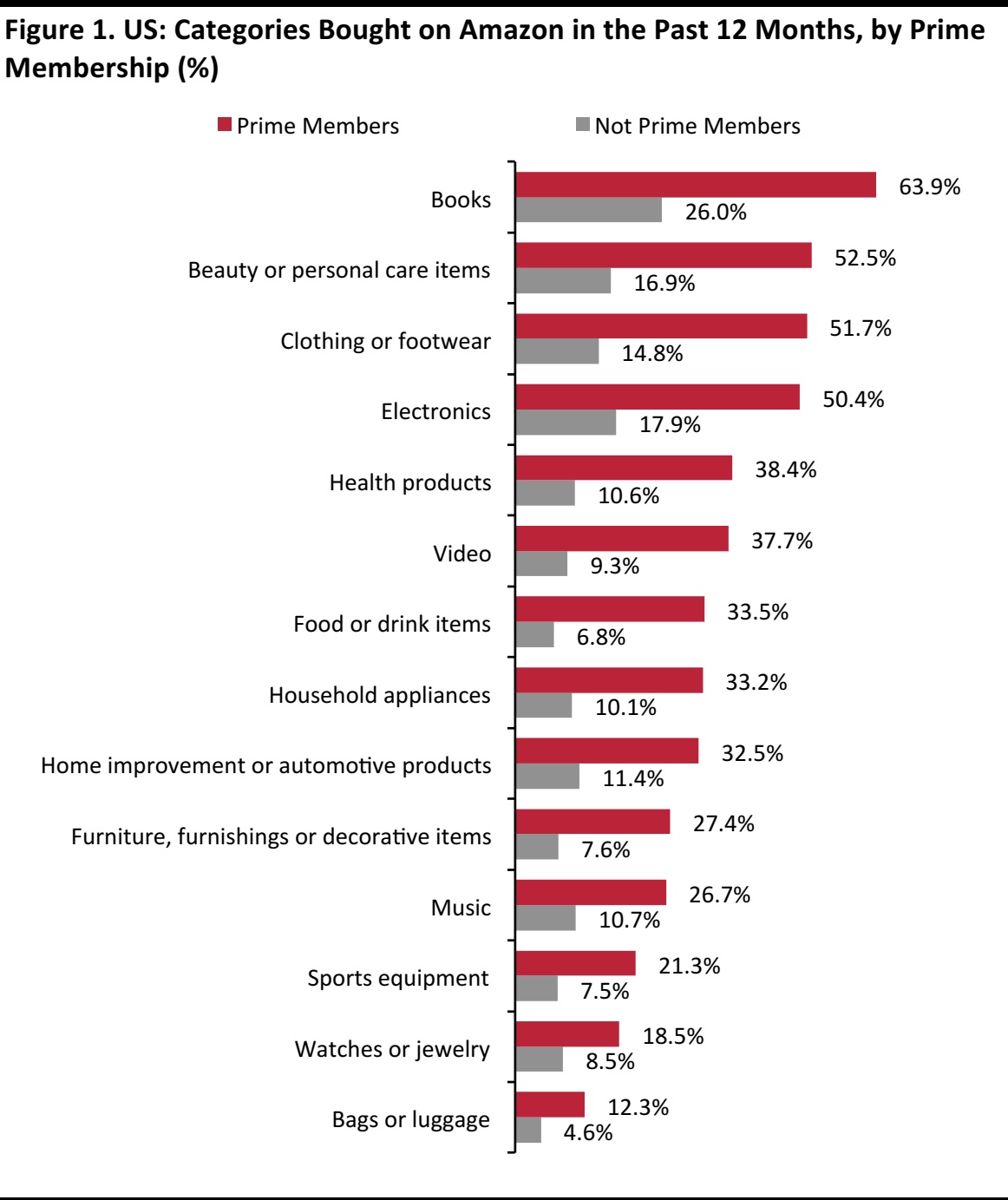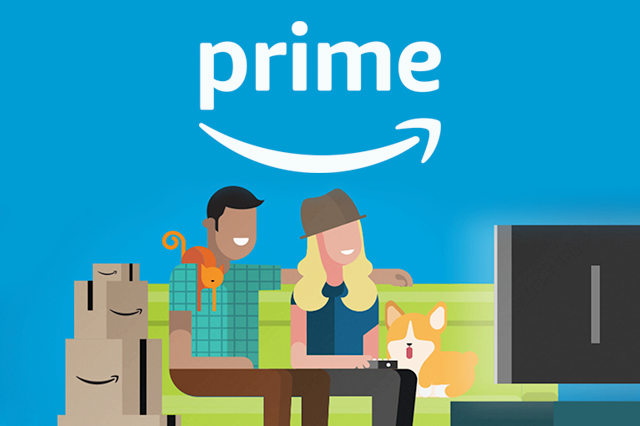Introduction
In this brief report, we look at the significance of Prime members to Amazon’s US shopper numbers. We chart what types of products US consumers buy on Amazon, and we break out Amazon Prime members versus nonmembers, to show how important Prime members are to Amazon by category.
We conducted our survey in January, when we provided 1,699 US Internet users with a list of categories and asked them to select those that they had bought on Amazon in the past 12 months. Some 43% of those surveyed said that they already have a personal Prime membership and a further 21% said that they have access to Prime benefits through someone else in their household. The remaining 36% did not have any access to Prime membership.
Prime Members Drive Sales in All Categories
Our research found strong demand for nontraditional Amazon categories such as beauty products and food and beverages:
- Books were the first type of product Amazon sold when it launched in 1994, and this category remains the most-shopped product on the site, by number of shoppers. Electronics, another early Amazon category, ranks very highly, too.
- Beauty and apparel, which Amazon pushed into more recently, are already among the most-shopped categories on the site. Health products and food and beverages, which are other nontraditional categories, are also popular.
As we chart below, Prime members drive shopper numbers, and so sales, across all categories. In all the named categories, Prime members are more than twice as likely as those without Prime membership to be buying on Amazon—and in some categories, the ratio is much higher.

Base: 1,699 US Internet users ages 18+ including 726 with a personal Prime membership and 615 with no access to Prime membership.
“Prime Members” have a personal Prime membership; “Not Prime Members” have no access to Prime benefits, including through a membership of someone else in their household.
Source: Coresight Research
Below, we chart the ratio between penetration rates among Prime members and among those without Prime membership. The gap is greatest in food and drink, a nontraditional category for Amazon, where Prime members are 4.9 times as likely to buy the category on Amazon than nonmembers.
The gap is substantial in video, too, likely because of Prime Video, which gives Prime members access to a Netflix-style video library, and which can be supplemented by paid-for video downloads. In the comparable media categories of books and music, the gap is notably narrower.
Nontraditional Amazon categories such as health products, furniture and clothing strongly over-index among Prime members, too.

Base: 1,699 US Internet users ages 18+ including 726 with a personal Prime membership and 615 with no access to Prime membership.
Source: Coresight Research
Our survey underscores the importance of Prime members to Amazon. In particular, the findings indicate that Prime members over index very strongly on nontraditional Amazon categories such as food, health products, furniture and apparel. This could imply that Prime membership encourages cross-category shopping and drives Amazon’s ventures into new categories.


